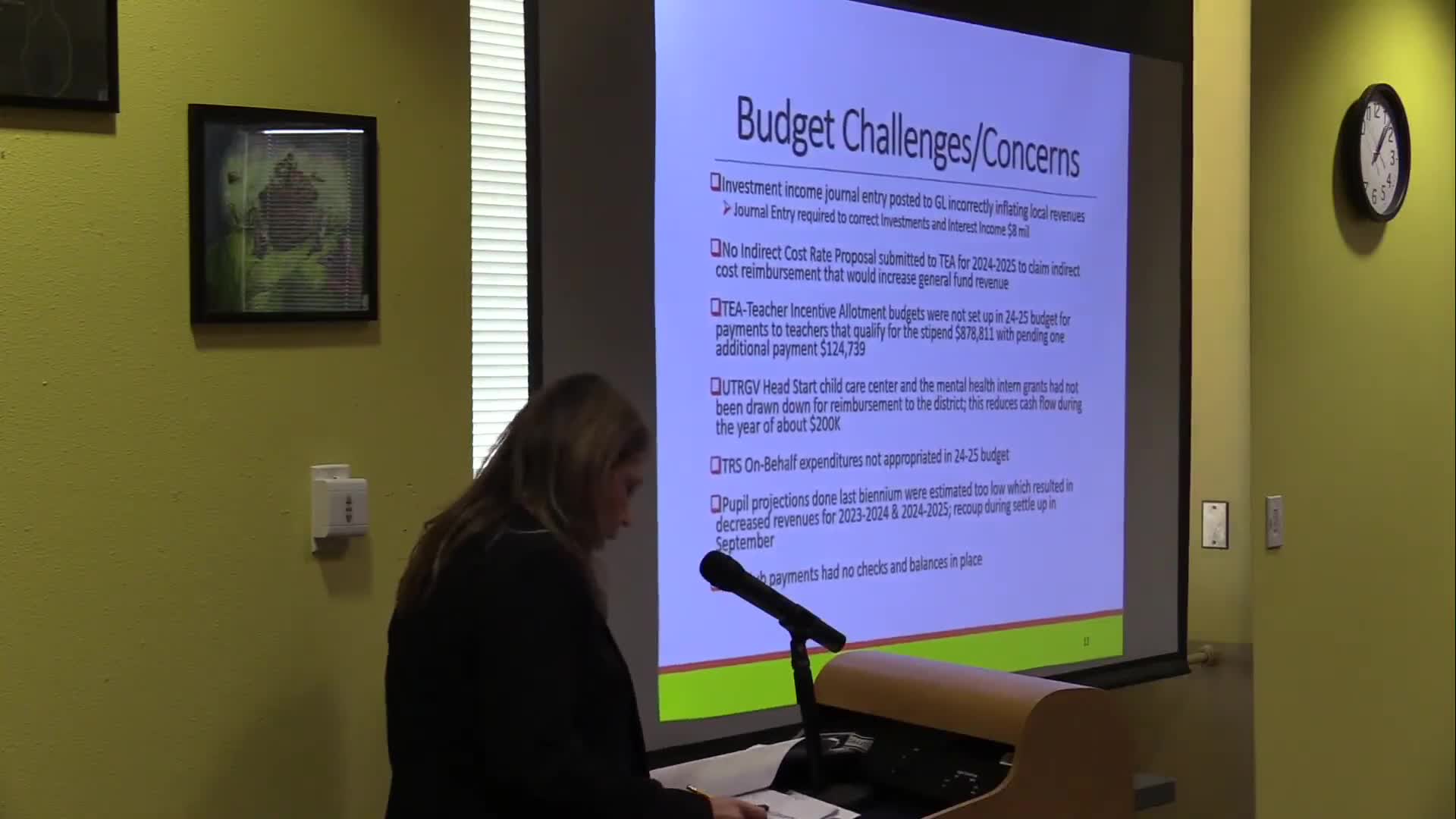Education finance official critiques flawed pupil projections impacting state revenue
June 08, 2025 | EDCOUCH-ELSA ISD, School Districts, Texas
This article was created by AI summarizing key points discussed. AI makes mistakes, so for full details and context, please refer to the video of the full meeting. Please report any errors so we can fix them. Report an error »

In a recent special board meeting held by Edcouch-Elsa Independent School District, a critical discussion unfolded regarding the impact of student enrollment projections on state funding. As the clock ticked towards the afternoon, board members gathered to address a pressing issue that could significantly affect the district's financial health.
The conversation centered around the biennial pupil projections, which are conducted every two years to estimate student enrollment and, consequently, the funding the district will receive. The projections for the 2023-2024 and 2024-2025 school years were completed in December 2022, but concerns were raised that these estimates were overly optimistic. The district's representative highlighted that historical trends indicated a decline in student numbers, suggesting that future projections should have accounted for a decrease of 2 to 3 percent. Unfortunately, the current estimates were found to be too low, leading to insufficient revenue to support existing programs and services.
As the meeting progressed, the representative pointed out that the upcoming biennium projections for 2025-2026 would also be crucial. These estimates, likely completed in December 2024, would need careful review to ensure they reflect realistic expectations. The board was informed that the district would not receive funding until a settlement in September, creating a cash flow challenge that could leave accounts in the negative.
The representative emphasized the importance of aligning projections with historical data to avoid financial strain. With the average daily attendance (ADA) figures showing a significant discrepancy—3706 reported versus a legislative estimate of 3242—the urgency for accurate forecasting became clear. The board was left contemplating the implications of these funding challenges, as they could hinder the district's ability to maintain essential educational programs.
As the meeting concluded, the representatives expressed a commitment to reaching out to the Texas Education Agency for assistance in refining future projections. The discussions underscored the delicate balance between conservative budgeting and the need for realistic enrollment estimates, a challenge that will continue to shape the district's financial landscape in the years to come.
The conversation centered around the biennial pupil projections, which are conducted every two years to estimate student enrollment and, consequently, the funding the district will receive. The projections for the 2023-2024 and 2024-2025 school years were completed in December 2022, but concerns were raised that these estimates were overly optimistic. The district's representative highlighted that historical trends indicated a decline in student numbers, suggesting that future projections should have accounted for a decrease of 2 to 3 percent. Unfortunately, the current estimates were found to be too low, leading to insufficient revenue to support existing programs and services.
As the meeting progressed, the representative pointed out that the upcoming biennium projections for 2025-2026 would also be crucial. These estimates, likely completed in December 2024, would need careful review to ensure they reflect realistic expectations. The board was informed that the district would not receive funding until a settlement in September, creating a cash flow challenge that could leave accounts in the negative.
The representative emphasized the importance of aligning projections with historical data to avoid financial strain. With the average daily attendance (ADA) figures showing a significant discrepancy—3706 reported versus a legislative estimate of 3242—the urgency for accurate forecasting became clear. The board was left contemplating the implications of these funding challenges, as they could hinder the district's ability to maintain essential educational programs.
As the meeting concluded, the representatives expressed a commitment to reaching out to the Texas Education Agency for assistance in refining future projections. The discussions underscored the delicate balance between conservative budgeting and the need for realistic enrollment estimates, a challenge that will continue to shape the district's financial landscape in the years to come.
View full meeting
This article is based on a recent meeting—watch the full video and explore the complete transcript for deeper insights into the discussion.
View full meeting
